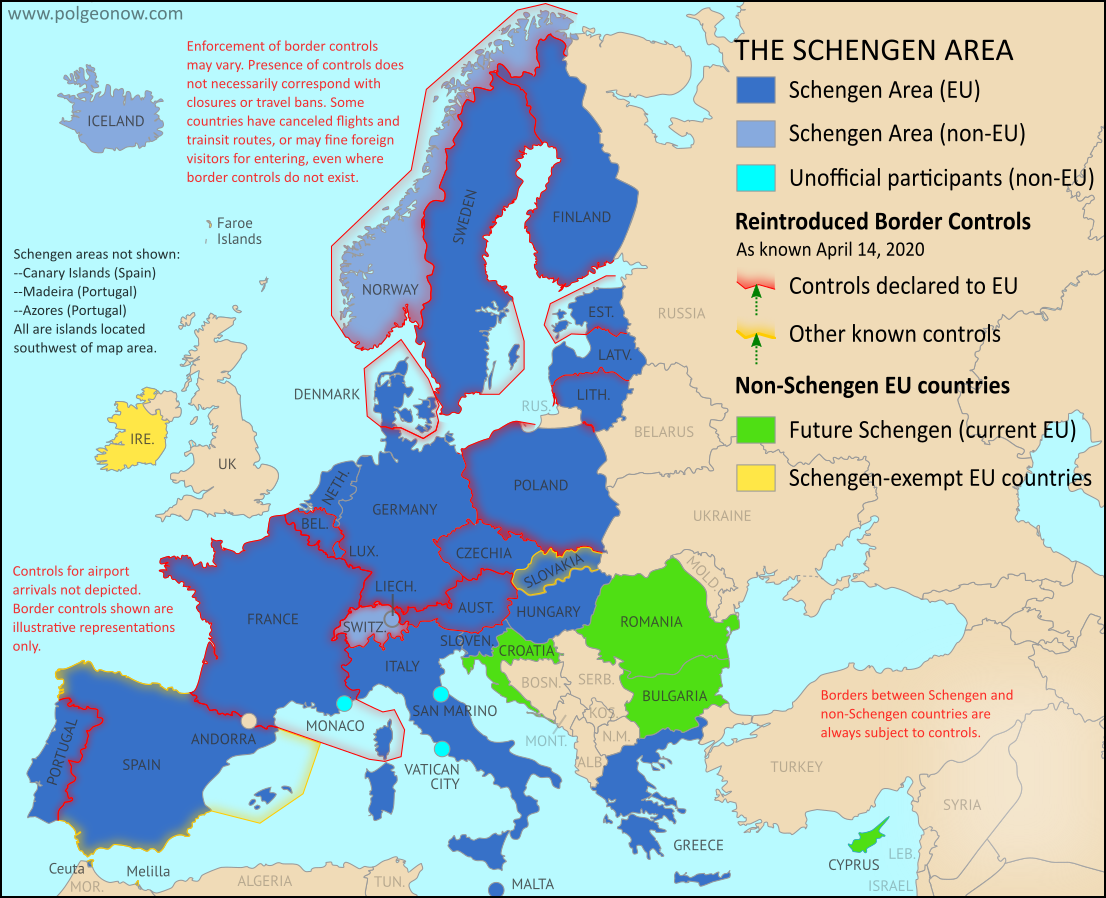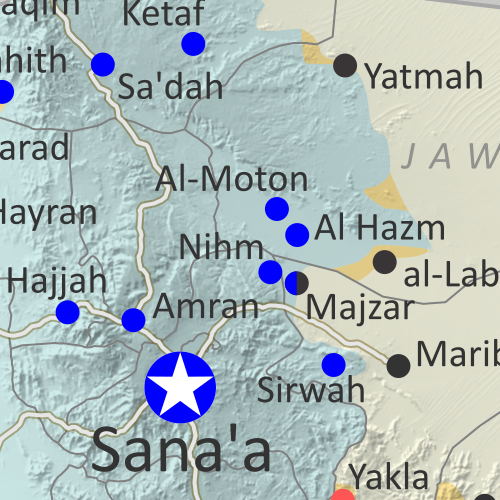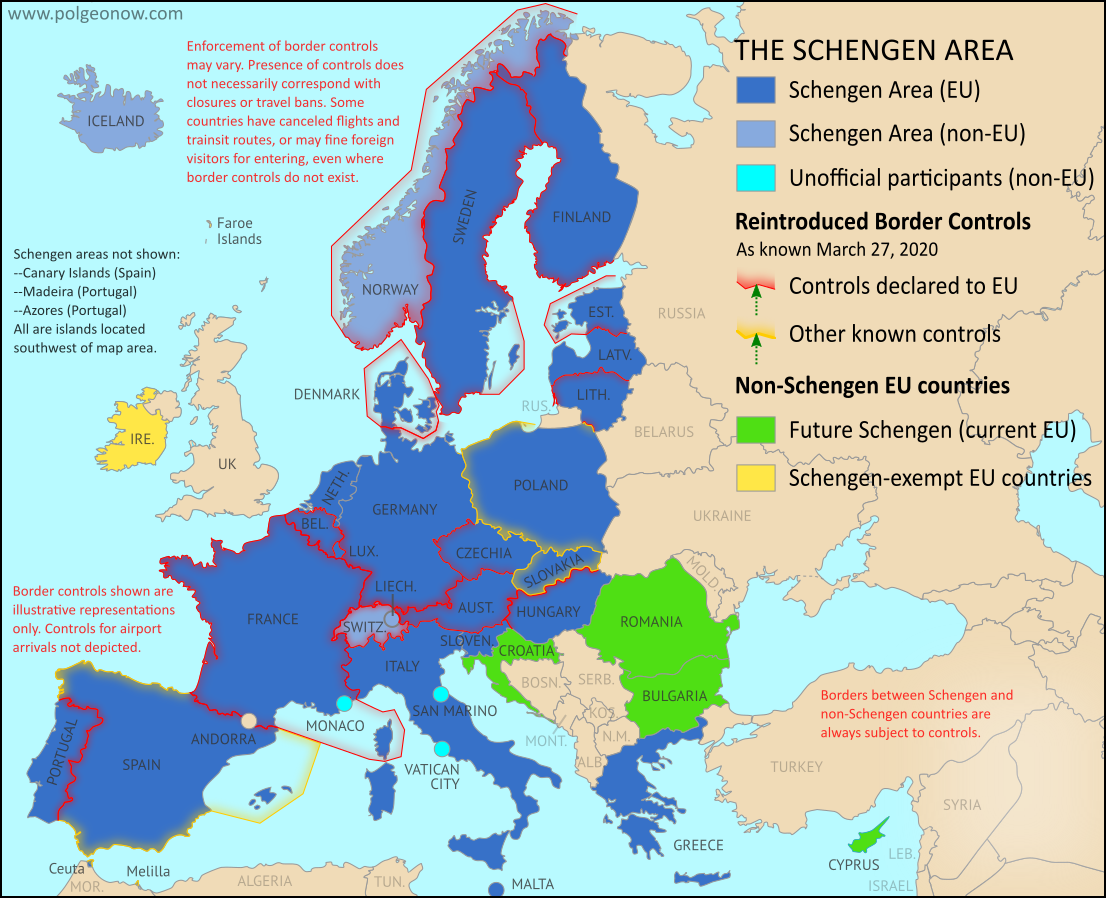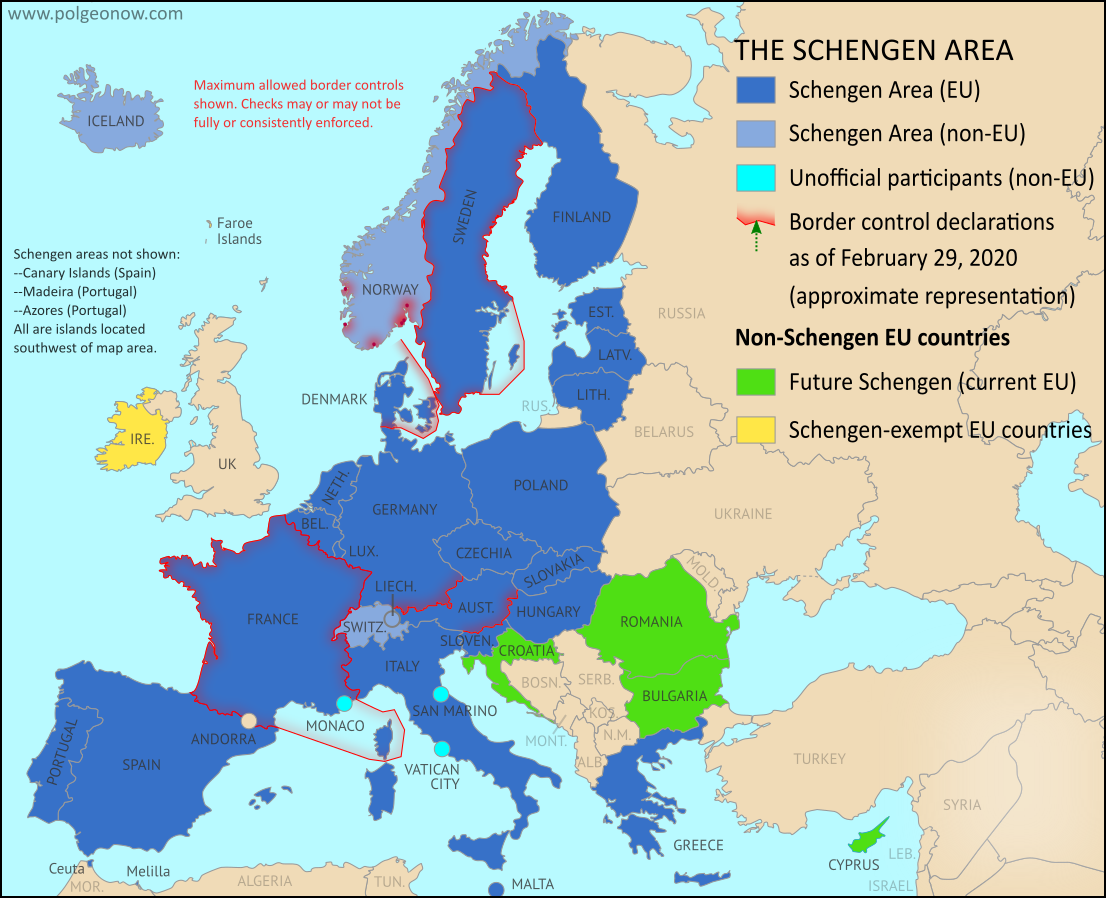This map and article have been updated to April 14, 2020. You can also view the previous edition of the map, from March 27, with its accompanying timeline.
Since 2016, PolGeoNow has mapped reinstated border controls within Europe's Schengen free travel area, with the companion piece to this article covering changes from mid-2017 up to last month. Now, border controls between European countries have drastically expanded amid the global coronavirus pandemic.
Read on for a country-by-country list of border controls and travel bans, plus a timeline of what went into effect when.
Article by Evan Centanni
Coronavirus-related Border Checks in the Schengen Area
As many travelers know, much of Europe is linked together as part of the "
Schengen Area",
a collection of countries that don't make travelers show any ID to
cross the borders between them, and don't regulate what people bring
across with them either (although this system is overseen by the
European Union, the
Schengen Area and the EU aren't the same thing). But under special circumstances, member countries can choose to temporarily resume border checks (also known as "border control").





